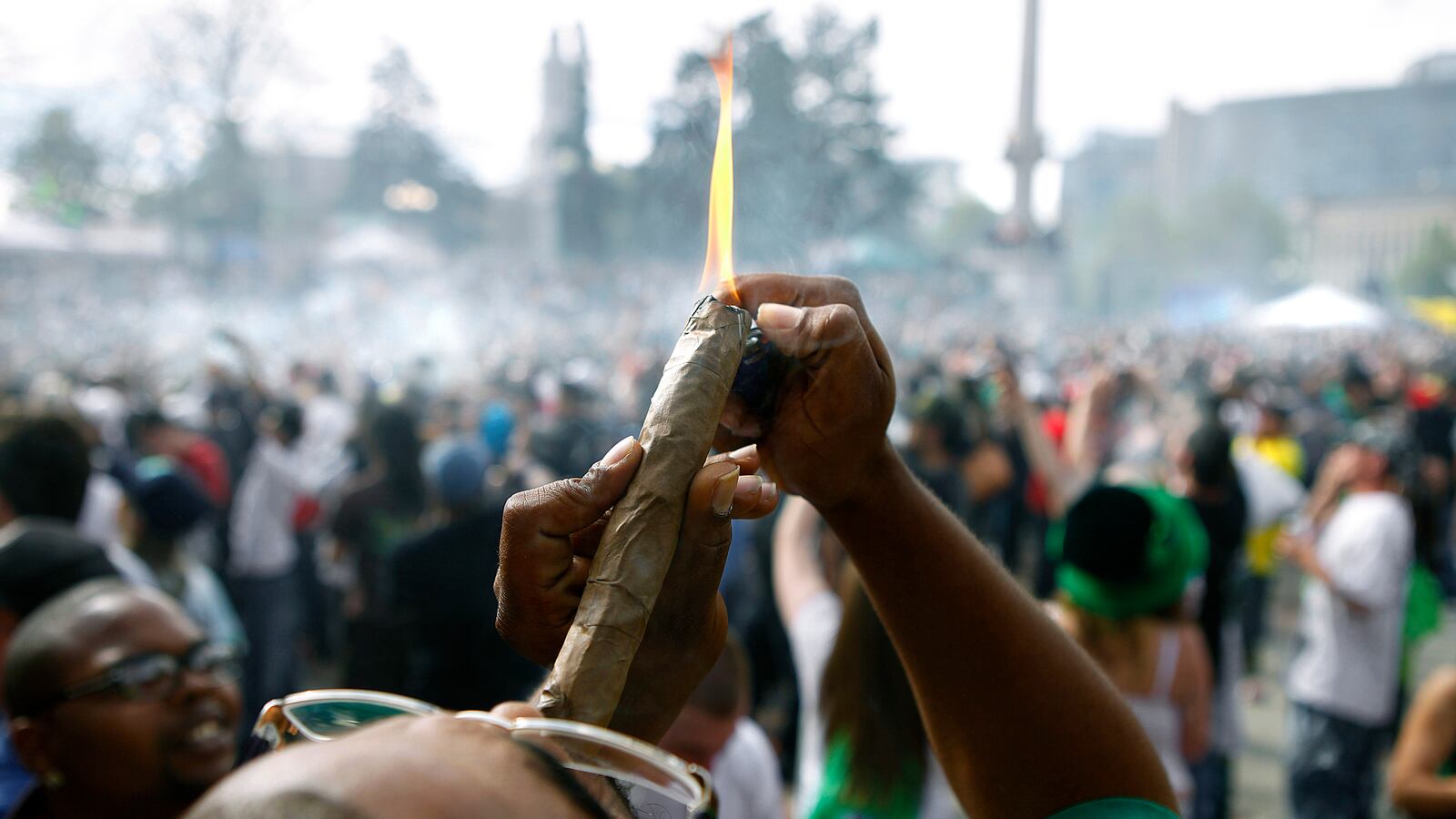“Where does 4/20 actually come from?” I ask Washington state’s pot czar, Mark Kleiman, over dinner recently.

“To be honest, I’m not sure,” he says, unashamed. “There’s some story from California, but I don’t know the specific details.” Bright, clever, and highly equipped for his new position as head of the state’s pot legalization program, I’m surprised to hear it. If the pot czar himself doesn’t know the story behind marijuana’s holy day, who does?
The answer: less people than you think.
4/20 is celebrated with an increasing zeal as more states move to legalize pot. But most celebrators—save for those who’ve read Ryan Grim’s prolific essay—aren’t exactly clear why they’re celebrating.
What many believe to be the “real” story was first told in High Times magazine in 1998. Since then it’s been disputed, refuted, and mocked. Whether or not it’s the truth, is a dangerous claim to make. But that it’s worth telling, is indisputable.
So, in honor of weed’s day of worship, here’s a look back at the true story of where it (likely) all began.
The scene is San Rafael, California, the year 1971, and the characters five high school friends who call themselves “The Waldos” (a nickname they’ve created because of their hangout: a wall). Young marijuana enthusiasts, the five are given what they think may be the greatest gift of all time: the location of an abandoned marijuana field that—if found—can be theirs.
Waldo Steve (they stick “Waldo” in front of their names, just for fun) breaks down the turn of events on a conference call with me and Waldo Dave. “A friend of mine told me his brother, who was in the Coast Guard out at Point Reyes, had been growing weed. He thought his commanding officer was going to bust him, and so he’d abandoned the patch,” Steve says. “He made us a map to help us find it.”
Sounds like treasure map, I tell them. Waldo Dave laughs, “It was EXACTLY like a treasure map, and we were totally excited about it.”
A treasure-hunting plan was hatched: meet at 4:20 p.m.—the time when all five are free from school and football—at the Louis Pasteur statue outside San Rafael High School. The search began. Day after day the boys met at 4:20, got high, and piled in Steve’s olive-green 1966 impala to search for the hidden herbs. “We would remind each other in the hallways that we were going to meet at 4:20 p.m. at Louie,” Steve says. “We’d smile and kind of salute each other saying, ‘Remember, 4:20 Louie.’ We kept that for weeks.” Weeks turned to months, and “4:20 Louie” became simply “4/20.” The patch was never found, but a secret marijuana code had been born. “It kind of became our secret word,” Waldo Steve says. “We knew that the teachers and our parents didn’t know what 4/20 meant, so we kept saying it. ‘4/20!’”
The Waldos liked the term. The Grateful Dead—a newly famous American rock band who they had close ties with—loved it. After overhearing the boys use it while Dave’s brother managed their opening acts, the band picked it up. Soon, it was a part of their vernacular as well. Grateful Dead concerts were suddenly full of 4/20 t-shirts and fliers alluding to the secret code. It was northern California’s sly little secret.
Had a High Times reporter named Steve Bloom not found one such “4/20” flyer twenty years later in 1991, the secret may have remained one. But struck by the funny use of the term, Bloom brought it to his editor, Steven Hager, who liked it too and encouraged him to publish it.
Bloom did, bringing “4/20” to the world stage for the first time. Hager, who believed the number was a “spiritual manifestation” of marijuana, took it to a new level: planning a festival around the date, creating an entire section of his magazine in its name, even holding daily staff meetings at 4:20 p.m.
When I ask Bloom what, in those first years, they thought 4/20 stood for—he’s honest. “We didn’t know. No one checked.” Bloom says he assumed—like many still do—that it was a police code for marijuana (a theory which has since been proven wrong).
It wasn’t until more than seven years later, when Hager got an email from a group called The Waldos that the origin of the phrase began to trickle out. “The first time I heard them telling the story, I didn’t believe a word they were saying,” Hager, then editor of High Times, tells me over the phone.
It was Waldo Steve’s approach to telling him, that got Hager on a plane to San Francisco. “‘I’m not interested in cashing in on this, I’m not interested in a trademark,” Capper told him. “I’m interested in facts. My friends and I invented this.”
Once in San Francisco, Hager got a front-row seat to the Waldos’ “vault” of evidence (they literally keep the mementos in a Wells Fargo safe). From early 1970s school newspaper clippings alluding to 4/20 to a batik flag made by their friend Patty Young in her 1971 art class, the Waldos’ proof was, as they say: “solid.” Hager filmed them discussing their story to take back to the High Times office. It was not only fascinating—but believable. The High Times published the story as the truth in 1998.
Bloom—who’s still credited with introducing the term to the mainstream—doesn’t begrudge The Waldos for getting credit, but he doesn’t love it either. “The idea of one group being responsible for the 4/20 phenomena is false,” he says. “There is something bigger here than just the number.” Sure, he believes their story. (“They’re nice guys and I don’t know why they would make that up.”) But, he thinks giving them credit for the holiday itself is simply too much.
“My thing is not who created 4/20 but who created the 4/20 holiday. Whoever created the flyer created it,” he says adamantly. “The Waldos have nothing to do with that.”
No one has ever stepped forward to claim the flyer, which The Huffington Post received a copy of from High Times.
The Waldos, a group of self-described “jokers” who still hang out daily, don’t fully disagree with Bloom’s point. “Actually 4/20 as in April 20 meant nothing to us at the time!” Steve says. “It was always just a time for us to meet,” Dave adds. “It’s funny that it’s become a worldwide phenomenon.”
Funny indeed. Had the boys decided on 4:30 p.m. instead, the celebration may have fallen ten days later. But 4:20 p.m. it was, and April 20, it is.
“Believe the story or not, the holiday is about nonviolence and peace,” Hager reminds me. After a week like this one, it’s a day we need more than ever.
So a merry 4/20, to one and all.






